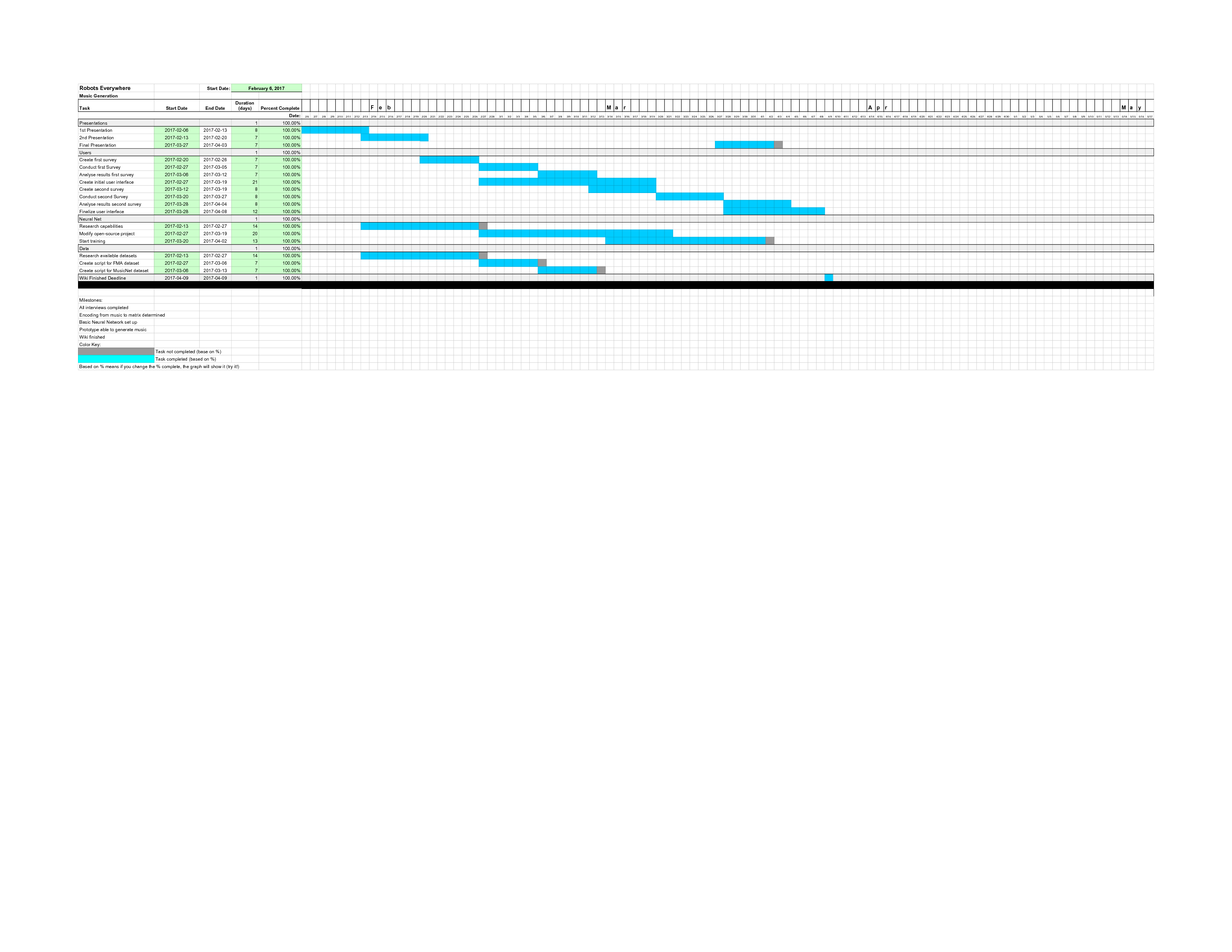PRE2016 3 Groep2
This is group 2's page
Group Composition
Group 2 has the following members:
- Steven Ge
- Rolf Morel
- Rick Coonen
- Noud de Kroon
- Bas van Geffen
- Jaimini Boender
- Herman Galioulline
Project Description
In this project, we will explore music generation using machine learning. Specifically we will consider how machine learning generating music can be used by consumers of music. Our hypothesis is that there are music consumers who have a particular taste for certain artists who are no longer alive (Bach for example). And these users are restricted to a fixed set of songs already composed by this artist with no variety - but desire new or more music of that same artist. A possible solution to this could be having a machine learning algorithm capable of generating songs containing the key characteristics that uniquely identify that artist. This would be done by training machine learning algorithm on that specific artist's songs. Our project will explore if there is indeed a large need/desire for this type of machine learning artist music emulation (or if not, then perhaps a genre generation or a mix of artists). Furthermore, we will also see if such a machine learning algorithm is in fact feasible to implement and provide convincing music.
Generative Adversarial Networks
Generative Adversarial Networks (also known as GAN) is a type of machine learning where two neural networks compete against each other.
The two networks consist of one being a generative network, while the other is discriminative. The generative network is trained on data sets to map the distribution of space
Training Data
- Million Song Dataset
Art Robots
How the art created by robots, will affect art and artists. Having the ability for robots to create art will push the frontier of what robots are capable of and break through into one of the last safe havens of man-only activities.
Planning (subject to change)
GANT chart

This GANT chart is created to keep this project organized. It shows in which activities this project consist, when these activities take part and when an activity needs to be finished.
It also contains a list of milestones. This list shows in which parts this project is divided. The major activities of the GANT chart (somewhat) correspond to these milestones.
During the course, the percentage of completeness in this GANT chart will be updated.
week 1
Deciding on the subject of the project Working on first presentation
week 2
First presentation done Working on second presentation Create a project plan (the GANT chart) Create a task division Start researching Data Engineering Start researching Tensor flow Start working on wiki
week 3
Second presentation done Start interviews
week 4
week 5
week 6
Interviews done
week 7
Start creating prototype
week 8
Researching done
week 9
week 10
I think the GANT chart is incorrect (Written here so I wont forget)
Division of Tasks
For the USE part of this project, we have given each member of the group a task. Each task involves interviewing people related to the creation of art/music with artificial intelligence and/or people related with the music industry.
- Steven Ge: Make use part go smoothly (and conduct extra interviews)
- Rolf Morel: Interview a deep learning professor
- Rick Coonen: Interview a musician (or any other person that creates music)
- Noud de Kroon: Survey the populus
- Bas van Geffen: Interview a professor at a conservatorium
- Jaimini Boender: Interview Tijn Borghuis
- Herman Galioulline: Interview a producer (A person that makes money from the music industry, but does not create music him-/herself)
For the technical part of this project, we have split the group into two teams. The Tensor flow team will work on the Neural network (which for which we use Tensor flow) and the Data Engineering team will gather test data and find a suitable encoding.
Team Tensor flow:
- Noud de Kroon
- Bas van Geffen
- Herman Galioulline
Team Data Engineering:
- Rick Coonen
- Jaimini Boender
- Rolf Morel
- Steven Ge